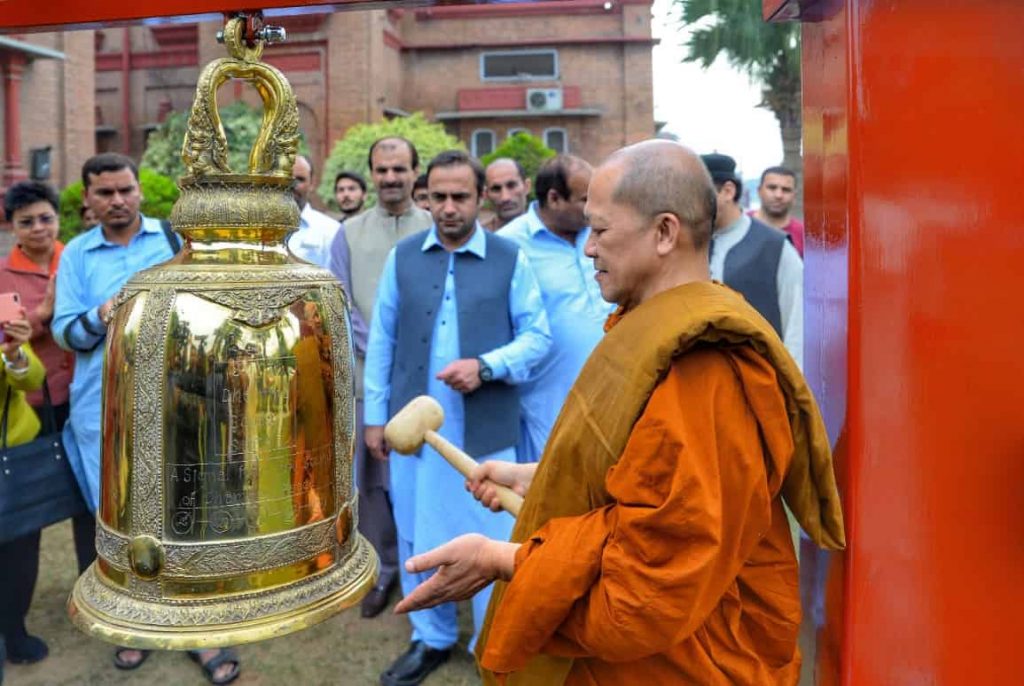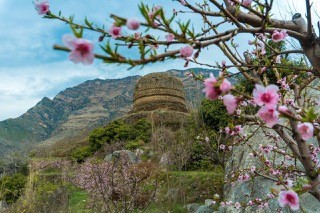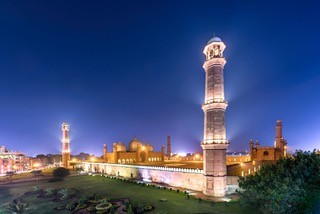‘Tourism is our mainstay and we are quite excited about the season ahead. More tourists are expected for Eid-ul-Fitr (Muslim festival that follows the holy month of fasting) who might want to stay a little extra as this year, summer holidays in schools begin around the Eid’. Chirped the representative of a local business association of Kaghan Valley in Pakistan’s North West back in February 2020.
Like many others associated with the tourism economy, he had his hopes pinned on the fact that amidst several measures adopted by the government for improving tourist experience, Pakistan topped the Condé Nast Traveller’s list of best holiday destinations for 2020 in December 2019.
The visit of the royal couple Prince William and Kate Middleton, and the maiden visit of the Buddhist Monk, the Most Venerable Arayawangso to Pakistan in October 2019 received international media coverage. These events brought recognition to Pakistan’s heritage assets including 6,000 Buddhist monuments (stupas, monasteries and artifacts from the Gandhara Civilization) located in the Khyber Pakhtunkhwa province (KP).

The Kartarpur Corridor in Punjab welcomed around 15,000 Sikh pilgrims in November last year who flocked to visit Nankana Sahib, the birthplace of (religion’s founder) Baba Guru Nanak on his 550th anniversary. In addition to the famous international bloggers and v-loggers (Eva zu Beck, Cynthia Ritchie and more), Pakistan is now a market of approximately 50 million domestic tourists who mostly travel in personal cars with families and in groups of an average of 5 people.
The number of tourists across Pakistan has been growing exponentially since 2015 due to a stable security situation, improved road connectivity, better tourism offering by the destinations in both summer and winter seasons, and intense promotional campaigns by the public and private sectors.
Read more: Kickstart tourism to solve all economic woes!
During June 2019, four destinations in KP (including Swat and Galiyat) received more than 2 million tourists during the four Eid holidays. The scenic valley of Hunza and its surroundings (situated along the ancient Silk Route) also registered a phenomenal year on year increase in the tourist numbers between 2018 and 2019.

Being one of his priority economic sectors, the Prime Minister of Pakistan announced government’s action plan to develop and promote tourism last year, including the on-arrival visa facility for group travelers and online visa processing for individual travelers initially from five 5 countries with plans to roll out the service eventually to 100 plus nationalities.
Fast forward to April 2020 – the world is dealing with a health emergency. The World Tourism Organization (UNWTO) has alerted that the COVID-19 pandemic could lead to a loss of U$300-500 billion in the tourism receipts globally as the international tourist arrivals could decrease by 20-30 percent.
The OECD Economic Outlook report of March 2020 mentions that the small and medium enterprises (SMEs) operating in the tourism and transportation sectors are already significantly affected by the virus and the measures taken to contain it. Pakistan is no different. The country has reported 8,000 plus positive cases of COVID-19 despite sincere containment efforts of the authorities.
Read more: How to promote tourism in Pakistan?
Most international and domestic flights to and from Pakistan have come to a screeching halt following the instructions of government in March. The tourist spots and public places (play-grounds, cinemas, shopping malls) were closed in mid-March across the country.
Most restaurants have either scaled down their operations to home deliveries and take-away, or had to close down temporarily. The preventive measures have severely challenged the sustainability of small eateries, street vendors and creative industries, forcing the employers to send workers on indefinite and in most cases, unpaid leaves.

The start-ups including homestays and tour operators are suffering due to cancellations of group bookings. The initial assessment fears that KP’s tourism sector alone will face a loss of US$ 20-25 million in revenues and could slash around 260,000 direct jobs. It is hard to put a number on the losses of the informal sector at this stage.
Perhaps the only unintended positive consequence of the pandemic is that the nature and wild-life will be able to take a break from the burden of over tourism, giving policy makers and private sector some time to help the sector build back better.
Read more: Guidelines to improve Tourism framework in Pakistan!
The public and private sectors thus need to collaborate to enable the industry cope with the impact of COVID-19 and prepare it for responsible tourism when the travel restrictions are lifted. Some suggestions follow:
- Develop, communicate and enforce standard operating procedures (SOPs) for workers, businesses and travelers;
- Design, communicate and implement direct financial support and incentives for the operators in the tourism value chains including the SMEs and microenterprises;
- Guide and support industry players such as restaurants, hotels, home stays and transporters to disinfect and upgrade facilities;
- Train local government officials, entrepreneurs, firms and workers to adopt and practice improved hygiene and health safety practices;
- Use technology to introduce virtual tours of museums, heritage sites and ski resorts both as a substitute to actual visits and as alternate sources of revenues; and
- Plan and execute on-site measures for better destination management for example, waste collection, plastics recycling and traffic management.
Pakistani authorities are in the process of launching support programs for the affected enterprises and daily wagers. However, targeted interventions for travel and tourism industry will also be required to protect jobs and restore travelers’ confidence.
Read more: Pakistan’s New Tourism Story
The KP province is using the resources available through the World Bank financed Khyber Pakhtunkhwa Integrated Tourism Development (KITE) project to; (i) immediately respond to the pandemic by providing medical equipment, supplies and personal protection equipment (PPE) to the health facilities; (ii) support disinfection of the sites; and (iii) conduct a ‘COVID-19 economic impact assessment on the tourism industry’, using project’s contingent emergency response component.
Post COVID-19, the tourism operations of the World Bank Group in Punjab and KP will continue supporting the planning and upgradation of tourist infrastructure and facilities (roads, museums, rest areas, heritage sites), tourism and hospitality training, and overall policy and regulatory overhaul to enable private investment mobilization with a focus on restoring the livelihoods.
Kiran Afzal is a Senior Private Sector Specialist with the World Bank Group. She is working on private sector development interventions including destination development, job creation, value chain competitiveness and matching grants for SMEs.The views expressed in this article are author’s own and do not necessarily reflect the editorial policy of Global Village Space.
